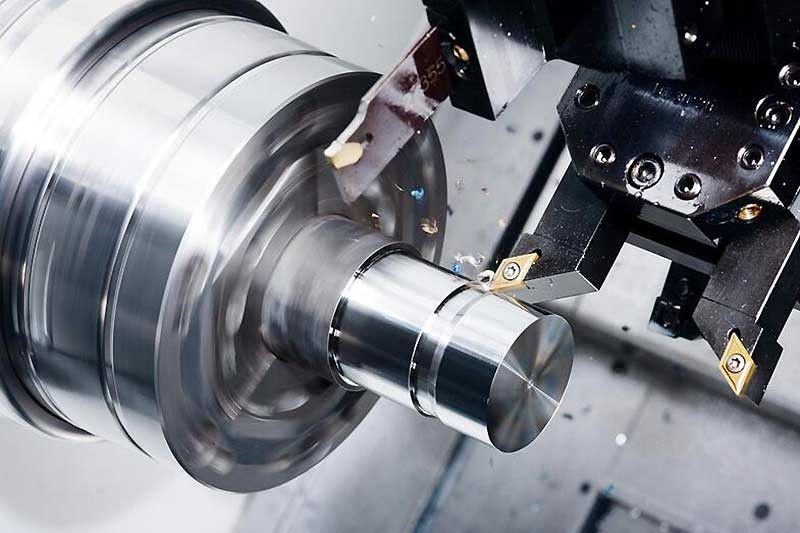Product Name Brand Model Area Price (RMB  RMB / piece ) pen type temperature and humidity meter Taiwan Hengxin AZ8709 Shanghai 220 — 578 Guangdong 250 — 350 Jiangsu 260 — 449 Shandong 244 — 440
AZ8709 pen type temperature and humidity meter
◆Shape pen ◆°C/°F switching function!
â—†Reading lock, record the maximum and minimum â—†With HR35 and HR75 solution to calibrate the humidity, to maintain the accuracy of the humidity!
â—†Quick response, high accuracy!
â—†Automatic shutdown!
â—† Conforms to CD: 89/336/EEC and standards: EN50081-1/1992, EN50082-1-1997
Range of wet  Degree :  5%  ~  95%RH
temperature  Degree : -20 to +50 °C Resolution 0.1%  RH  0.1 °C ,  0.1 °F Accuracy Humidity :  ±3%
Temperature :  ±0.8 °C Size 175×42×16mm Display LCD Dual Display : Temperature / Humidity Weight 52g Power Supply 3V Single Battery Accessories Case , Battery , Instruction Manual, HR33 and HR75 Calibration Solution Brand Hengxin ( AZ )

What is CNC Turning
In CNC turning, a chuck (or specialized clamp) holds bars of material and, as they are rotated, a tool is fed to the piece to remove material to create a specific shape. A turret, which holds a group of tools, is programmed to move along the work piece in three different axes of motion to shape the material according to the assigned specifications.
Since CNC turning involves removing material from a work piece, it`s considered a [subtraction machining" process. It is done on a lathe machine, which can be used on all types of material, from wood to metal to plastic. It can also be done on a mill or a drill press.
Turning is primarily used to create cylindrical parts. It can be completed on the outside or the inside of a work piece, which is known as boring. The process can also be used to conduct various other operations, including:
· Grooving: Cuts grooves or creates narrow cavities in work pieces.
· Taper turning: Creates a gradually decreasing diameter in a cylindrical shape.
· Drilling: Produces round holes, which are typically for screws and bolts.
· Facing: Cuts a flat surface perpendicular to the axes of the milling cutter.
· Parting: Separates one part of the work piece from another.
· Knurling: Creates vertical, horizontal or crossing lines on the work piece.
· Threading: Makes grooves that can be screwed into other objects.
CNC Turning process
l Creating a digital representation of the part in CAD
l Creating the machining code from the CAD files
l CNC lathe setup
l Manufacturing of the turned parts
Capabilities
|
|
Typical |
Feasible |
|
Shapes: |
Thin-walled: Cylindrical |
|
|
Part size: |
Diameter: 0.02 - 80 in |
|
|
Materials: |
Metals |
Ceramics |
|
Surface finish - Ra: |
16 - 125 μin |
2 - 250 μin |
|
Tolerance: |
± 0.001 in. |
± 0.0002 in. |
|
Max wall thickness: |
0.02 - 2.5 in. |
0.02 - 80 in. |
|
Quantity: |
1 - 1000 |
1 - 1000000 |
|
Advantages: |
All materials compatible |
|
|
Disadvantages: |
Limited to rotational parts |
|
|
Applications: |
Machine components, shafts, engine components |
|
Suitable Materials for Turning
In turning, the raw form of the material is a piece of stock from which the workpieces are cut. This stock is available in a variety of shapes such as solid cylindrical bars and hollow tubes. Custom extrusions or existing parts such as castings or forgings are also sometimes used.
Turning can be performed on a variety of materials, including most metals and plastics. Common materials that are used in turning include the following:
l Aluminum
l Brass
l Magnesium
l Nickel
l Steel
l Thermoset plastics
l Titanium
l Zinc
When selecting a material, several factors must be considered, including the cost, strength, resistance to wear, and machinability. The machinability of a material is difficult to quantify, but can be following characteristics:
l Results in a good surface finish
l Promotes long tool life
l Requires low force and power to turn
l Provides easy collection of chips


Cnc Turning,Cnc Mill Turn,Cnc Milling And Turning,Precision Cnc Turning
Suzhou FCE precision electronics Co., LTD , https://www.sjfukeyifcesz.com